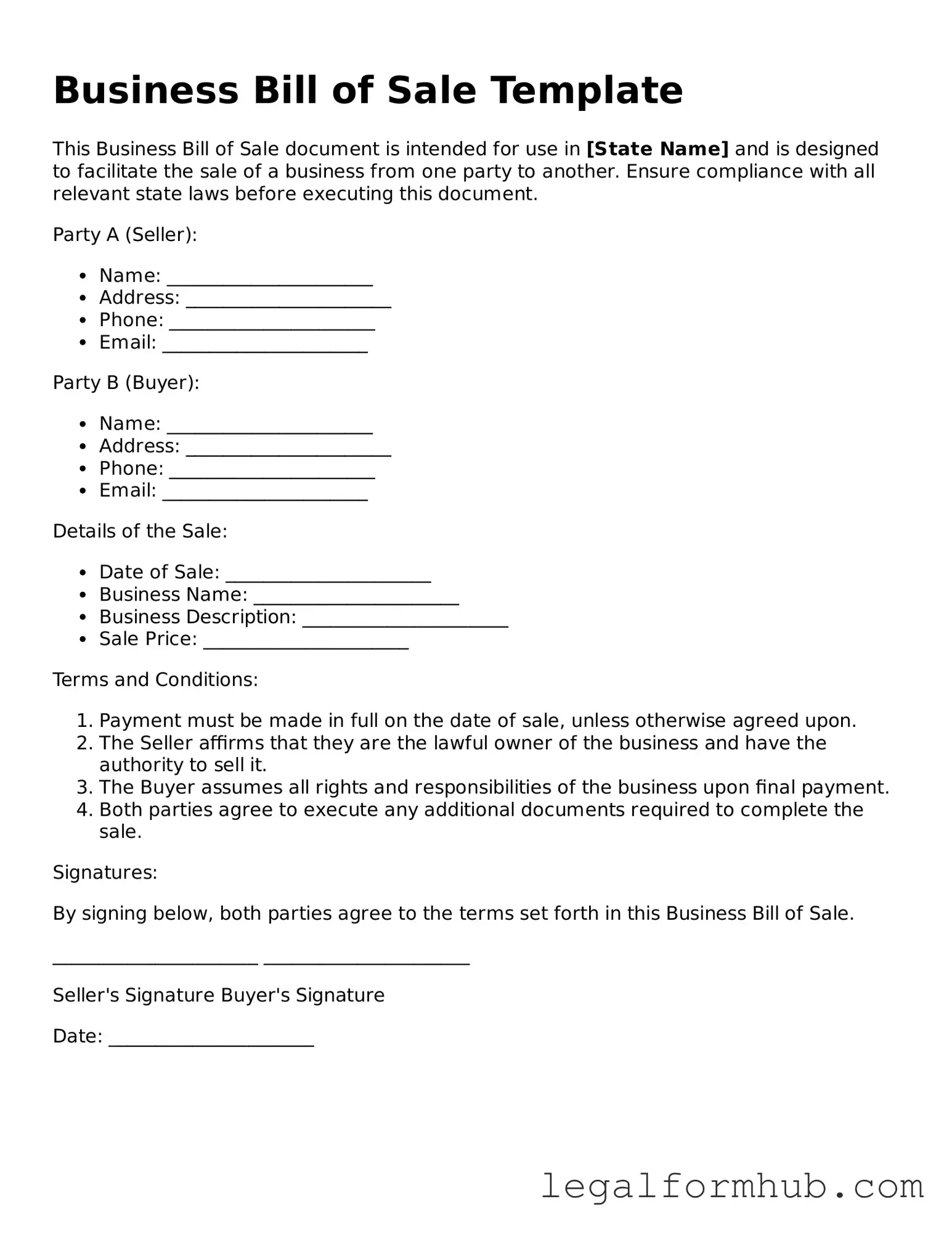A Business Bill of Sale is similar to a Vehicle Bill of Sale. Both documents serve the purpose of transferring ownership from one party to another. In the case of a Vehicle Bill of Sale, it specifically details the sale of a motor vehicle, including information such as the vehicle identification number (VIN), make, model, and year. This document provides legal proof of the transaction and protects both the buyer and the seller by clearly outlining the terms of the sale, including the purchase price and any warranties or conditions attached to the sale.
Another document that resembles the Business Bill of Sale is the Personal Property Bill of Sale. This form is used to transfer ownership of personal items, such as furniture, electronics, or collectibles. Similar to the Business Bill of Sale, it includes essential details about the items being sold, including descriptions, conditions, and the agreed-upon price. Both documents aim to provide a clear record of the transaction, ensuring that both parties understand their rights and responsibilities.
The Equipment Bill of Sale is also comparable to the Business Bill of Sale, as it specifically addresses the sale of equipment, often used in commercial settings. This document outlines the specifics of the equipment being sold, including serial numbers, condition, and any warranties. Like the Business Bill of Sale, it serves to protect both the buyer and seller by documenting the transaction and confirming the transfer of ownership, which is crucial for tax and liability purposes.
For those interested in a simplified transaction process, an effective resource is the comprehensive general bill of sale guide available at fillable-forms.com, which outlines necessary details and legal requirements to ensure a smooth transfer of ownership in various contexts.
In addition, the Real Estate Bill of Sale is another document that shares similarities with the Business Bill of Sale. While it primarily focuses on the sale of real property, it often includes personal property that is part of the real estate transaction, such as appliances or fixtures. This document helps clarify what is included in the sale and provides a legal record of the transfer, ensuring that both parties are aware of what is being conveyed.
Lastly, the Inventory Bill of Sale can be likened to the Business Bill of Sale, particularly in situations where a business is being sold along with its inventory. This document details the items included in the sale, such as stock, supplies, and other assets. It serves to protect both the buyer and seller by providing a comprehensive list of what is being transferred, ensuring clarity and preventing disputes over what was included in the sale.
